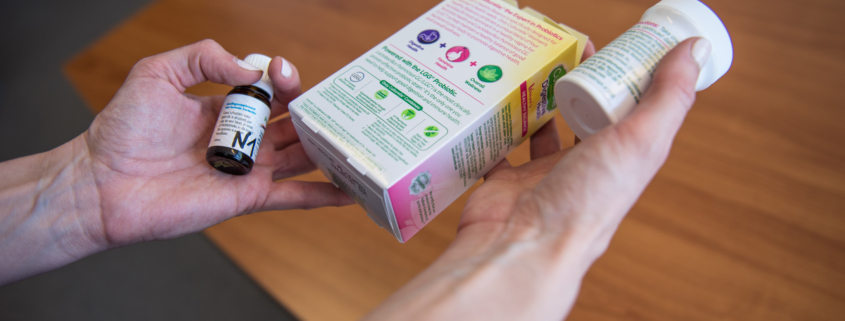GG + BB-12 don’t reduce antibiotic use in an elderly, institutionalized population
By Mary Ellen Sanders, PhD, ISAPP Executive Science Officer
Close to two years ago, a team convened by ISAPP conducted a meta-analysis showing that probiotics may reduce number of antibiotic prescriptions, with evidence primarily in children (ISAPP-initiated systematic review and meta-analysis shows the association of probiotic consumption with reduced antibiotic prescriptions). A recent study suggests that this outcome likely does not extend to elderly care home residents.
A newly published randomized, placebo-controlled trial tested a combination product comprising two well-studied probiotic strains, Lacticaseibacillus (formerly known as Lactobacillus) rhamnosus GG and Bifidobacterium animalis subsp lactis BB-12, administered at ~1.5 × 1010 per day to institutionalized residents 65 years of age or older to test if this treatment reduced antibiotic administration. The study showed no reduction in antibiotic use compared to the control. Further, the probiotic was not associated with improvement in secondary endpoints, which included many that probiotics are hypothesized to mitigate, including incidence of common infections, duration of infections, C. difficile infection, antibiotic associated diarrhea, hospitalizations, or presence of antibiotic resistant microbes in fecal samples.
Other endpoints suggested that the probiotic group fared worse than the placebo group. Statistically significant differences were found between the probiotic and placebo groups for antibiotics administered for lower respiratory tract infections and well-being scores at 3 months.
This was a well-controlled, comprehensively reported study. Some factors to consider in interpreting these results: The population was elderly (mean age = 85.3 years) and infirmed (66% lacked capacity to consent and 63 of 310 randomized subjects died prior to conclusion of the study). Stool culture at 3 months showed L. rhamnosus present in 84% of intervention group compared to 37% of placebo group, although the groups were matched for this factor at baseline. This suggests some cross-contamination between the placebo and intervention groups may have occurred. As the authors state, exposure of the placebo group to the probiotic “would dilute any between-group differences in outcomes.” A higher number of C. diff positive subjects were assigned to the probiotic group than the placebo group (7.2% vs 0%, respectively).
Overall, this study provides evidence that L. rhamnosus GG + B. lactis BB-12 are not effective prophylactically in a population of elderly care home residents.















